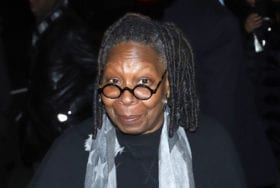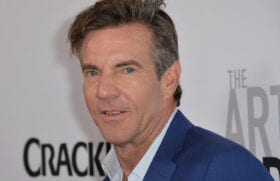You may or may not know this, but Playboy.com has been safe for work since 2014. Go on, check it out: You’ll find a media site geared toward a younger male audience, filled with articles and videos touching on entertainment, celebrities, and other lifestyle content. And yes, you may find a sexy photo or two – but no nudity. Even the iconic print magazine ran its last nude photo shoot in December.
So what now? Interestingly enough, the company’s digital audience has grown considerably since NSFW became SFW. According to Playboy Enterprises CEO Scott Flanders, who spoke at the company’s NewFront event in NYC’s Chelsea district, Playboy’s audience has grown 400% in the past two years.
There are a few reasons for that. For one, trying to compete with the rest of the Internet in the erotica space had become a losing proposition. (“That battle has been fought and won,” Flanders told The New York Times last year. “You’re now one click away from every sex act imaginable for free. And so it’s just passe at this juncture.”) Another factor: If publishers want to get their content onto Facebook and other social networks, clothes are required. And audiences – especially those vaunted younger demos – tend to find a huge portion of their daily content through social media.
So Playboy is now positioning itself as a lifestyle brand for young men, loaded with professional-grade reporting and digital content. The company is now covering everything “from media and culture to sex and politics,” said producer and correspondent Yoonj Kim, one of Playboy’s NewFront presenters. The presentation also heavily emphasized that Playboy has been known for serious-minded content since its inception, running interviews with the likes of Bernie Sanders and actor Don Cheadle, and publishing highly regarded works of journalism and fiction (Ray Bradbury’s Fahrenheit 451 debuted within the pages of Playboy, for instance). The message was clear: Playboy is not in the midst of a wholesale rebrand – it’s merely emphasizing certain well-established aspects of its brand over others.
And the company had some new announcements: For one, it’s unveiling a large new slate of original programming this summer, including scripted comedies and docu-series, as well as food-, gaming-, and tech-related content. Among the new shows: The Booze Room, a weekly comedy news show about drinking, starring comedian Josh Wolf and mixologist Alex Day; The Life by Playboy, an inside look at the process of editing the lifestyle section of Playboy magazine; Robots Are Hard, a scripted sci-fi comedy; and House of Waris, a series in which actor and jewelry designer Waris Ahluwalia holds a regular dinner party filled with notable celebs and luminaries.
The company also announced the launch of Playboy Studios, a new in-house branded content unit helmed by Hugh Garvey, the company’s Executive Editor.
“We’re not a magazine company. We’re an integrated media company,” Phillip Morelock, Playboy’s Chief Digital Officer, told Cynopsis Digital in an on-site interview. “And we provide a lot of value for marketers across the board.”
“We’ve been doing this for a long, long time,” he added. “Twelve pages a month of nude photography is not the entirety of Playboy. Playboy has a brand that stands for something separate and apart from nudity, especially online, and in social, where nudity’s never been allowed. There’s an old joke: ‘I read it for the articles.’ And there’s a reason that joke works; it’s because there are great articles. And we want to just remind everyone that people – especially younger folks – have certain brand associations with Playboy. We want to reintroduce them to the brand.”




